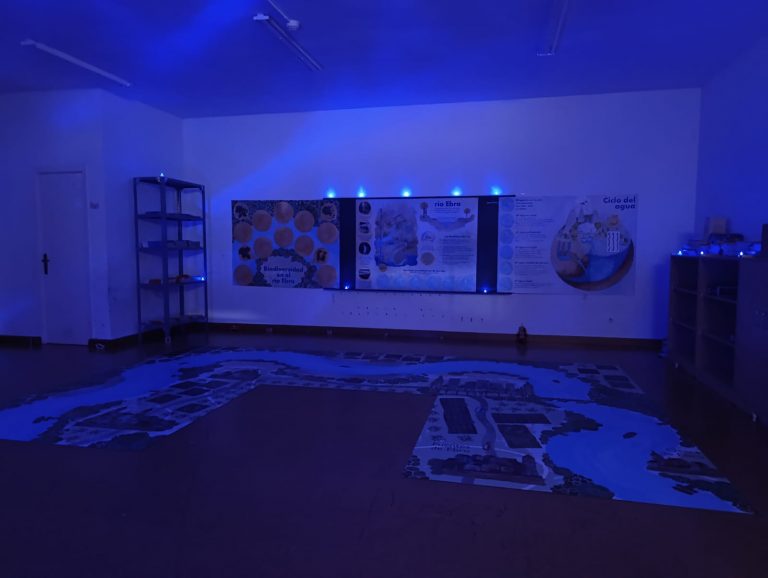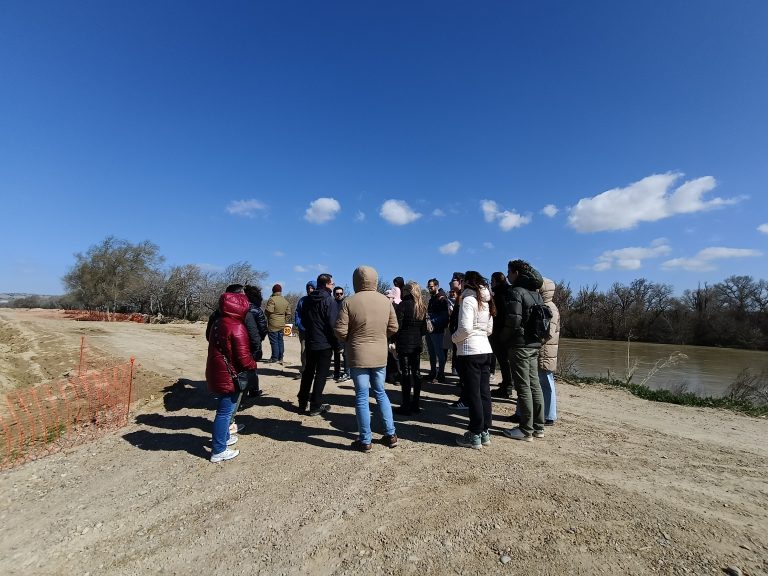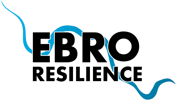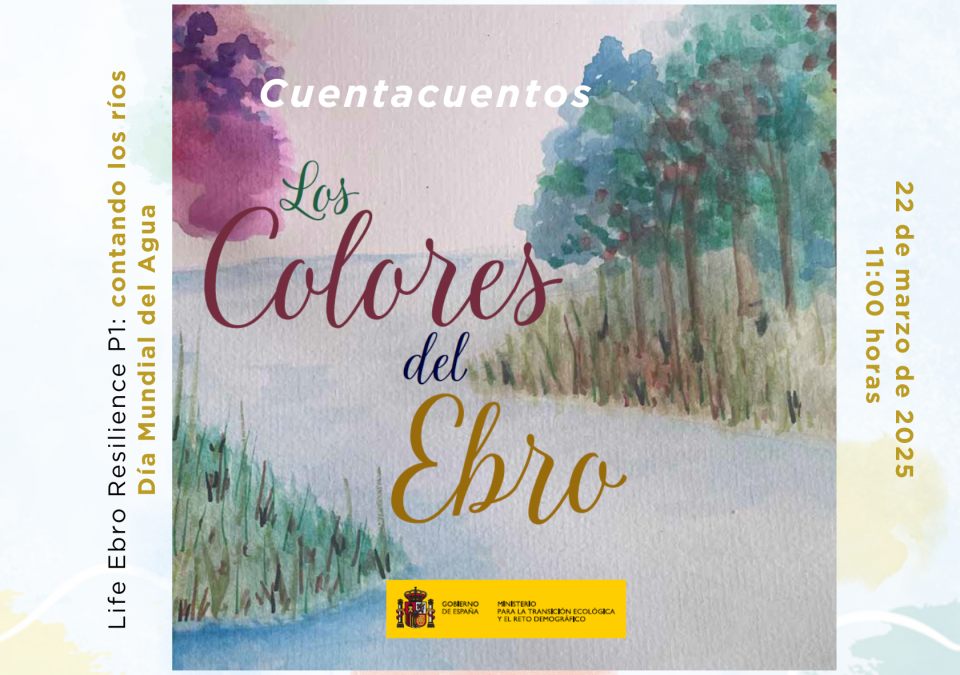This March and on the occasion of the celebration of World Water Day on March 22nd, the LIFE Ebro Resilience P1 Project wanted to launch informative actions around the river and the phenomenon of floods prepared for different audiences.
From two exhibition proposals, to a storyteller or the technical visit that recently took us to Osera de Ebro – Fuentes de Ebro (Zaragoza) with the College of Technical Engineers of Public Works of Aragon (CITOP), the objective is to continue offering tools to inform the entire population about the risk of flooding in the middle stretch of the Ebro.
Storytelling “The Colors of the Ebro”.
On the same Saturday, March 22, we will carry out an activity for the whole family with the storytelling “The Colors of the Ebro” based on the book published by the LIFE Ebro Resilience P1 Project, specifically through the Ministry for Ecological Transition and the Demographic Challenge, MITECO.
It will take place at 11 a.m. at the Water and Environment Documentation Center, Paseo Echegaray y Caballero, 18, in Zaragoza.
This story is a publishing novelty and is designed with beautiful illustrations and poetic texts to talk about the Ebro River. Its protagonist is the little drop Orbe, which not only takes us through the story, but also presents us with a guide of activities aimed mainly at the second cycle of kindergarten and first cycle of primary school.
The book in digital format is available for download on the Project’s website.

Expo for schools in Castejón and Fuentes de Ebro
In March we have launched the informative exhibition for primary education. The exhibition has already traveled to Castejón, Navarra and Fuentes de Ebro (where it remains this week) and will travel to other schools in the coming months.
Through a vinyl carpet with the design of a stretch of river, information panels, images with Velcro, figures of animals and plants, building blocks, a light table with sheets to illustrate the changes in the river, two types of activities are carried out with the students:
–Explorers of the Ebro River“, aimed at students from 1st to 3rd grade of Primary School, whose objective is for students to discover in a playful and participatory way the importance of water and the Ebro River, learning about its environment, biodiversity and the changes it undergoes over time.
–Mission Ebro River” aimed at students from 4th to 6th grade of primary school, which seeks to learn about the importance of water, biodiversity, flood risk management and ecosystem services of the Ebro River through dynamic and participatory activities and activities.

When the river recovers its space
And this March 22, in collaboration with the Government of Aragon, the opening of the exhibition Cuando el río recupera su espacio (When the river recovers its space) will also take place in La Alfranca. An ideal setting to present this collection of photographs that explain the interventions of the LIFE Ebro Resilience P1 Project, nature-based solutions to reduce the risk of flooding.
The exhibition will be open to the public at the Palacio de La Alfranca (carretera de Pastriz, s/n, Pastriz, Zaragoza) until May 25.
Through 25 snapshots, provided by the Ebro Hydrographic Confederation for LIFE Ebro Resilience P1, three information panels, and an audiovisual viewing point, five thematic areas related to the actions of the Project are shown:
- Meanders that become part of the river again.
- Remaining a riparian: adaptation is possible
- Types of intervention
- Restoring ecosystems and fighting against floods
- Real and effective participation
The panels provide general and contextual information on the interventions, an example of an intervention in the La Roza meander and the benefit of wetlands as a natural water retention measure.

Technical visit
These dissemination activities also led us to a guided tour organized by the LIFE Ebro Resilience P1 Project and the College of Technical Engineers of Public Works of Aragon (CITOP) on March 15 to learn about the ongoing and planned interventions in Zone 2 of intervention Osera de Ebro – Fuentes de Ebro (Zaragoza).
There they were able to learn about the proposed Lateral Flow Buffer Zones (LFBZ) and the reduction of channel narrowing at specific points along the stretch. These zones will compartmentalize the agricultural farms that will be pre-flooded just before the levees overflow, generating water buffers that will minimize damage to farms and infrastructures.
This intervention aims to reduce the current flooding of 350 hectares of agricultural land and the recovery of 20 hectares of river space.


